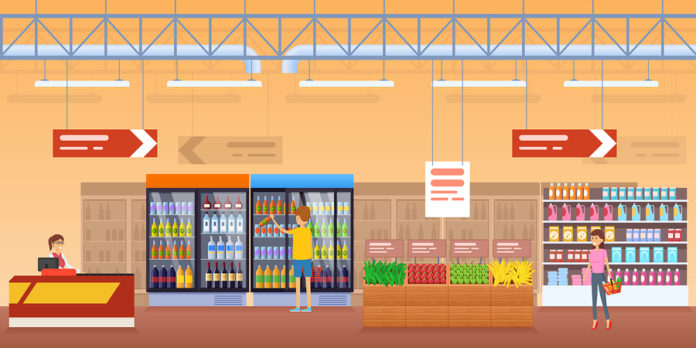
The way people eat and shop is changing rapidly with the rising popularity of meal kits, grocery delivery, and the “I want it now” mindset, not to mention the heightened focus on overall health and wellness. It’s a tide of change that’s forcing the food industry into uncharted territory, especially when it comes to adopting technology in retail stores and manufacturing plants.
 Phononic, a solid-state cooling manufacturing company, is revolutionizing the way grocers can keep their products fresh in any part of the store’s footprint. In this interview with Phononic’s CEO, Tony Atti, we take a look into how grocers and food manufacturers can boost their technological infrastructure to adjust to shifting consumer behaviors.
Phononic, a solid-state cooling manufacturing company, is revolutionizing the way grocers can keep their products fresh in any part of the store’s footprint. In this interview with Phononic’s CEO, Tony Atti, we take a look into how grocers and food manufacturers can boost their technological infrastructure to adjust to shifting consumer behaviors.
Grocery stores aren’t on par with other retailers in terms of technology. What are some of the most valuable strategies food retail executives can replicate from brands that have successfully implemented technology and a strong omnichannel strategy?
TA: Grocery stores have the unique challenge of supporting and selling multiple brands in direct competition, often within inches of one another’s brands. With this, along with the store’s own private label brands, you not only have immediate channel conflict within an aisle, but the entire store. Successful brands facing a similar set of circumstances have differentiated their retail environment by using technology to enhance the overall shopping/retail experience. This way, regardless of a shopper’s brand loyalty, they enjoy the overall shopping experience in that particular retail format.
What are some of the tell-tale signs that grocery retailers should consider giving their technological infrastructure a boost?
A great place to start is with the store layout – making sure that shoppers have readily available access to fresh, frozen, perishable, healthy and pre-made meals. Recent research from Phononic affirmed shopper preferences for these products, with 46% of respondents noting that grocery stores should have more frozen and/or refrigerated options at checkout. Currently, however, their options are fairly limited as products are relegated to stationary spots within the store, often far afield from the check-out or high traffic areas. Responding to the rise of shopper “micro visits,” online ordering, and fresh pick-up means that grocers need to look to store layouts redesign that maximizes perimeter placements. Distributed or co-located product placement provides consumers with a greater choice during their shopping visit, no matter the time spent in store.
What’s the biggest challenge food retailers face when implementing new technology? What pointers can you offer to overcome those difficulties?
Store facilitation and support is an often overlooked, but critical, variable to introducing new technologies. Power and infrastructure are expensive and fixed assets in a store, and are not readily moved to accommodate new technologies. For instance, refrigeration and freezers are specifically placed in the store to accommodate their unique power requirements. With this in mind, distributing conventional options requires new power drops and infrastructure not readily done or expensive to outfit. Identifying technologies that can easily work with, or that are independent of, the existing store infrastructure removes facilities and operations as decision-making impediments to adopting new technologies and services.
Your survey found that refrigerated and frozen sections will continue to expand. What kind of products should retailers be stocking their shelves with to prepare themselves for increased demand?
Based on insights from both the consumer and food and retail executive, consumers are seeking convenience, and grocers are looking to adapt their strategy, layout, and technology to meet this preference. Fresh, frozen, healthy, perishable, and ready-made meals were all identified as ideal products consumers would be willing and wanting to buy at the point-of-sale/checkout area.
What Millennial buying habits are the most influential drivers of change in store layouts and what technology we’re seeing pop up in store? How can grocery store executives prepare for Generation Z?
Millennials have demonstrated a desire for quick “micro-visits” to the store, where they spend little time in-store and buy from a very specific set of items/products. This is quite different from past generations, who often arrive at the store with a two-page list of items and shop the aisles. As a result of this generational change, the perimeter of the store is being redesigned to become a place where as many items as possible are within sight of those shoppers. For instance, products are being grouped together to create ready-made meals upon returning home and pre-made meals are being positioned at the external perimeter to accommodate this shopping behavior. Grocery stores must continue to make shifts to accommodate these new “in-and-out” shopping trends.
As grocers begin to adapt to modern customer buying habits, demand for cutting-edge technology and supplies will skyrocket. What implications does this have for the food supply chain?
Most of our food supply chain has been built on the mass production of goods shipped in bulk to the store with significant loss viewed as a standard cost of business. This is inconsistent with what shoppers are looking for, including farm-to-table, healthy, and fresh products. With these types of items now preferred, this means proximity to the store and careful attention to the cold chain is required to maintain freshness from the farm through shipment to the store. This simply takes the distributed refrigeration and freezer trends within the store and extends those expectations throughout the entire supply chain.
—
To learn more about how grocery stores are adjusting to the changing retail landscape, check out Phononic’s report How Will Grocers Make the “Store of the Future” Today’s Reality?







